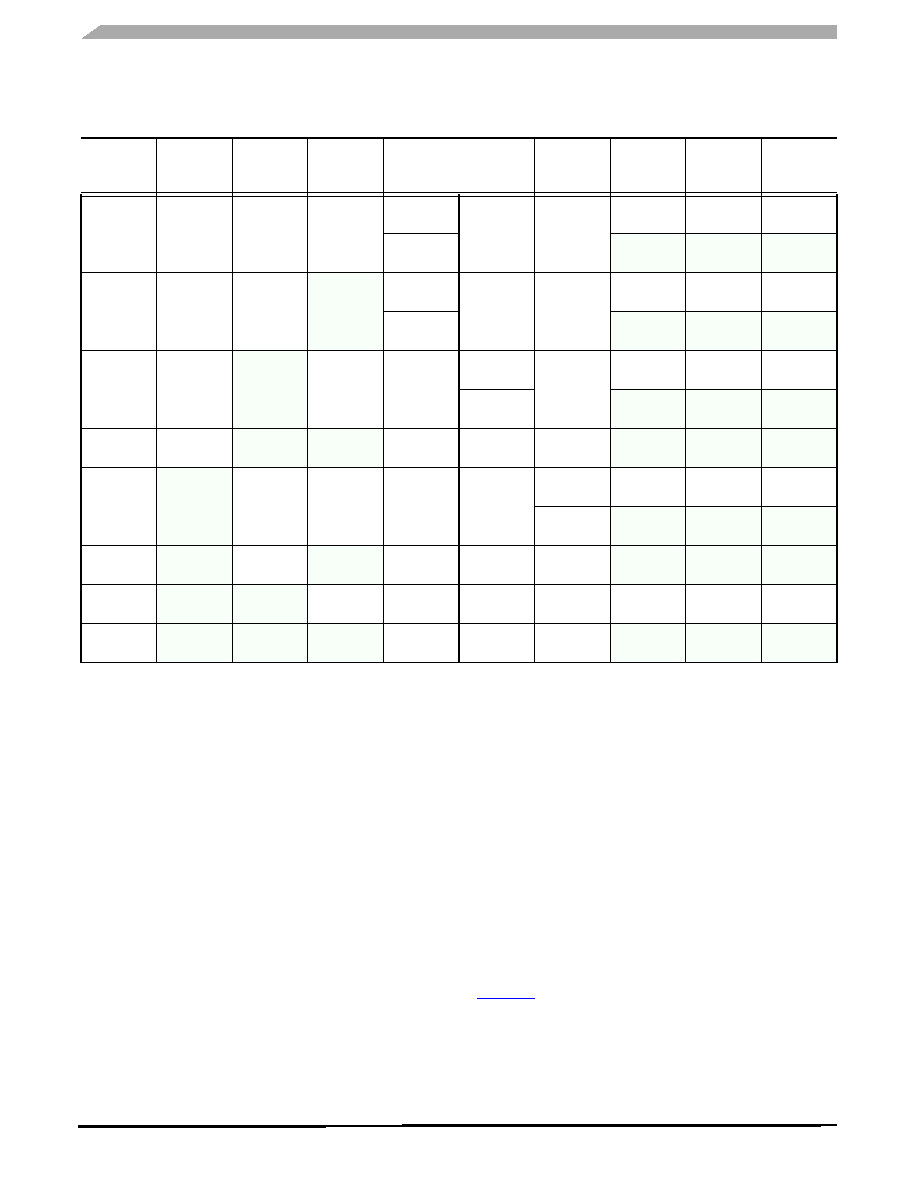- 您現(xiàn)在的位置:買賣IC網(wǎng) > PDF目錄98013 > MCZ33781EK (FREESCALE SEMICONDUCTOR INC) SPECIALTY MICROPROCESSOR CIRCUIT, PDSO32 PDF資料下載
參數(shù)資料
| 型號: | MCZ33781EK |
| 廠商: | FREESCALE SEMICONDUCTOR INC |
| 元件分類: | 微控制器/微處理器 |
| 英文描述: | SPECIALTY MICROPROCESSOR CIRCUIT, PDSO32 |
| 封裝: | 0.65 MM, LEAD FREE, SOIC-32 |
| 文件頁數(shù): | 13/44頁 |
| 文件大小: | 940K |
| 代理商: | MCZ33781EK |
第1頁第2頁第3頁第4頁第5頁第6頁第7頁第8頁第9頁第10頁第11頁第12頁當(dāng)前第13頁第14頁第15頁第16頁第17頁第18頁第19頁第20頁第21頁第22頁第23頁第24頁第25頁第26頁第27頁第28頁第29頁第30頁第31頁第32頁第33頁第34頁第35頁第36頁第37頁第38頁第39頁第40頁第41頁第42頁第43頁第44頁

Analog Integrated Circuit Device Data
20
Freescale Semiconductor
33781
FUNCTIONAL DESCRIPTIONS
FUNCTIONAL INTERNAL BLOCK DESCRIPTION
PSEUDO BUS SWITCHES
Pseudo Bus Switches are provided on the Channel 0 bus.
They allow one channel to communicate via two external bus
wire sets (D0H/D0L and DPH/DPL). There is a pseudo bus
switch on both the bus high and bus low driver. Upon device
reset the bus switches are open. This allows the master to
initialize devices on D0H/D0L. After all of these slaves are
initialized, the pseudo bus switches can be closed, allowing
the devices on DPH/DPL to be initialized.
The Pseudo Bus Switches can only be commanded closed
by the BSWH and BSWL bits in the D0EN register. These bits
can also open the switch at any time.
The Pseudo Bus Switches have independent thermal
shutdown protection. Once the thermal shutdown point is
reached, the bus switch is opened (becoming high-
impedance) and the BSWH and/or BSWL bit is cleared in the
channel 0 DEN register. If this occurs, the Pseudo Bus
Switches can only be closed again by setting the BSWH and/
or BSWL bit to a 1 with a write command to the channel 0
DEN register.
SPREAD SPECTRUM
The dominant source of radiated electromagnetic
interference (EMI) from the DBUS bus is due to the regular
periodic frequency of the data bits. At a steady bit rate, the
time period for each bit is the same, which results in a steady
fundamental frequency plus harmonics. This results in
undesired signals appearing at multiples of the frequency
that can be strong enough to interfere with a desired signal.
A significant decrease in radiated EMI can be achieved by
randomly changing the duration of each bit. This can
significantly reduce the amplitude by having the signal spend
a much smaller percentage of time at any specific frequency.
The signal strength of the fundamental and harmonics are
reduced directly by the percentage of time it spends on a
specific frequency.
A circuit to do this is included in this IC, and can perform
the spreading of the signal independently for each channel,
while generating the bit clock timing for the channel. This is
done in the Spread Spectrum (SS) Block Diagram shown in
To implement the channel bit clock a common 64MHz
clock is created from the on board 4MHz oscillator using a
digital PLL. Multiples of this clock period (15.625 nsec) are
used to select the minimum channel bit time. The Spread
Table 7. Receiver Decision Logic
Bus Pin
Conditions
Receiver
High 6 ± 1
mA
Receiver
Low 6 ± 1
mA
Receiver
Sum 12 ±
6mA
High and
Low XOR
(bit/bit)
High and
Sum XOR
(bit/bit)
Low and
Sum XOR
(bit/bit)
ER Bit
SPI0
DnRnxData
SPI1
DnRnxData
Normal
CRC Ok
H*L Ok
N/A
0
Receiver
High
Receiver
Low
H*L Not OK
1
Receiver
High
Receiver
Low
Out of Spec
CRC Ok
Bad CRC
H*L Ok
N/A
0
Receiver
High
Receiver
Low
H*L Not OK
1
Receiver
High
Receiver
Low
Fault
CRC Ok
Bad CRC
CRC Ok
N/A
H*S Ok
N/A
0
Receiver
High
Receiver
Sum1
H*S Not OK
1
Receiver
High
Receiver
Low
Fault L
CRC Ok
Bad CRC
N/A
1
Receiver
High
Receiver
Low
Fault
Bad CRC
CRC OK
N/A
L*S Ok
0
Receiver
Sum0
Receiver
Low
L*S Not OK
1
Receiver
High
Receiver
Low
Fault H
Bad CRC
CRC Ok
Bad CRC
N/A
1
Receiver
High
Receiver
Low
Common
Mode Noise
Bad CRC
CRC Ok
N/A
0
Receiver
Sum0
Receiver
Sum1
Fault
Bad CRC
N/A
1
Receiver
High
Receiver
Low
相關(guān)PDF資料 |
PDF描述 |
|---|---|
| MD1802FH | 10 A, 700 V, NPN, Si, POWER TRANSISTOR, TO-220AB |
| MD1802FX | 10 A, 700 V, NPN, Si, POWER TRANSISTOR |
| MD1803DFH | 10 A, 700 V, NPN, Si, POWER TRANSISTOR, TO-220AB |
| MD2001FX | 12 A, 700 V, NPN, Si, POWER TRANSISTOR |
| MD2103DFX | 6 A, 700 V, NPN, Si, POWER TRANSISTOR |
相關(guān)代理商/技術(shù)參數(shù) |
參數(shù)描述 |
|---|---|
| MCZ33781EKR2 | 功能描述:輸入/輸出控制器接口集成電路 DBUS2 MASTER STND RoHS:否 制造商:Silicon Labs 產(chǎn)品: 輸入/輸出端數(shù)量: 工作電源電壓: 最大工作溫度:+ 85 C 最小工作溫度:- 40 C 安裝風(fēng)格:SMD/SMT 封裝 / 箱體:QFN-64 封裝:Tray |
| MCZ33784EF | 功能描述:加速計(jì) - 板上安裝 DBUS2 SENSOR INTERFACE RoHS:否 制造商:Murata 傳感軸:Double 加速:12 g 靈敏度: 封裝 / 箱體: 輸出類型:Analog 數(shù)字輸出 - 位數(shù):11 bit 電源電壓-最大:5.25 V 電源電壓-最小:4.75 V 電源電流:4 mA 最大工作溫度:+ 125 C 最小工作溫度:- 40 C |
| MCZ33784EF/R2- | 制造商:FREESCALE 制造商全稱:Freescale Semiconductor, Inc 功能描述:DSI 2.02 Sensor Interface |
| MCZ33784EFR2 | 功能描述:加速計(jì) - 板上安裝 DBUS2 SENSOR INTERFACE RoHS:否 制造商:Murata 傳感軸:Double 加速:12 g 靈敏度: 封裝 / 箱體: 輸出類型:Analog 數(shù)字輸出 - 位數(shù):11 bit 電源電壓-最大:5.25 V 電源電壓-最小:4.75 V 電源電流:4 mA 最大工作溫度:+ 125 C 最小工作溫度:- 40 C |
| MCZ33789AE | 功能描述:網(wǎng)絡(luò)控制器與處理器 IC Airbag ASSP RoHS:否 制造商:Micrel 產(chǎn)品:Controller Area Network (CAN) 收發(fā)器數(shù)量: 數(shù)據(jù)速率: 電源電流(最大值):595 mA 最大工作溫度:+ 85 C 安裝風(fēng)格:SMD/SMT 封裝 / 箱體:PBGA-400 封裝:Tray |
發(fā)布緊急采購,3分鐘左右您將得到回復(fù)。